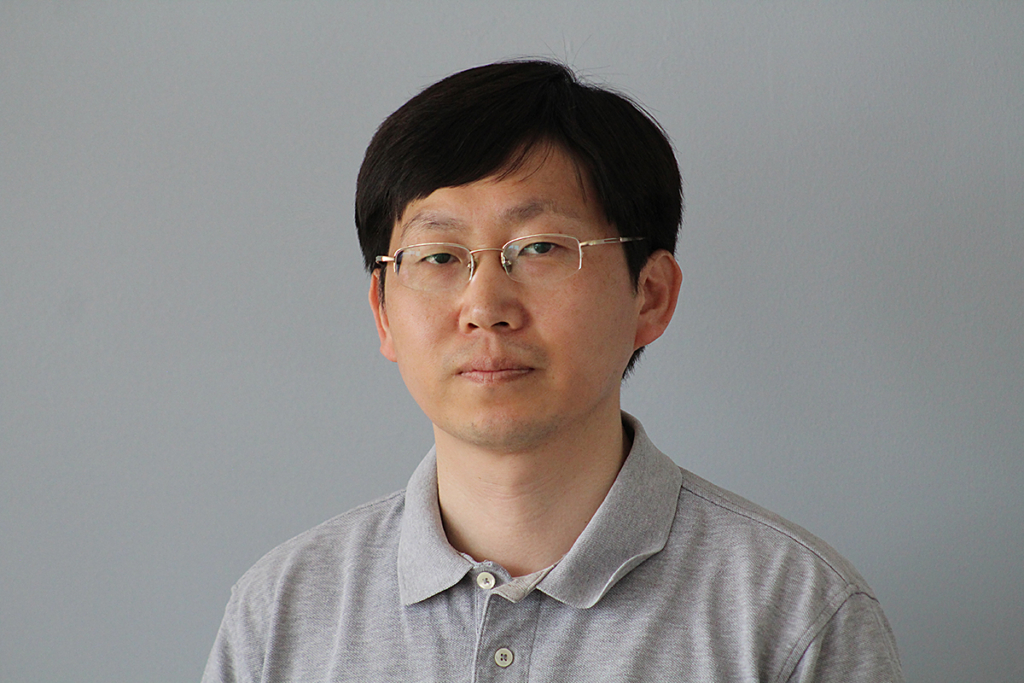
Eui-Seok Chung is an Associate Research Fellow at the IBS Center for Climate Physics (ICCP). After his Ph.D. in the School of Earth and Environmental Sciences of Seoul National University (SNU), he worked as a postdoctoral fellow at the Research Institute for Basic Sciences of SNU. Then, Eui-Seok moved to the Rosenstiel School of Marine and Atmospheric Science, University of Miami, and worked as a postdoctoral research associate and assistant research scientist. Since he joined the IBS Center for Climate Physics in February 2018, he has been working on detection and attribution of climate change using in situ and satellite observations along with climate model simulation output.
Q. What is your main research area here at ICCP?
I use satellite observations together with available long-term in situ observations to examine changes in temperature, water vapor, clouds, precipitation and radiative fluxes, and assess reliability of climate model simulations and reanalysis datasets using the observed variability as a benchmark. I am also interested in attributing climate change using climate model simulations in conjunction with observations.
Q. Could you explain little more about your recent research published in the journal Nature Climate Change?
Over the past few decades, the Pacific Walker circulation has strengthened, cooling the eastern equatorial Pacific and triggering shifts in global winds and rainfall. In contrast to the observed strengthening, the majority of climate models simulate a gradual weakening when forced by increasing greenhouse gas concentrations. The discrepancy between climate model projections and observed trends has led to speculations about the fidelity of the current generation of climate models and their representation of tropical climate processes. To determine whether the observed changes in the tropical atmospheric circulation are due to natural climate processes or caused by human-induced climate change, we conducted one of the most comprehensive big-data analyses to date. We found that the satellite-inferred strengthening of the Pacific Walker circulation is substantially weaker than implied by other surface observations used in previous studies. We further showed that, although the average response is a Walker circulation weakening, there are substantial discrepancies amongst the individual model experiments, in particular when considering shorter-term trends, suggesting a dominant role of natural variability on the recent strengthening of the Pacific Walker circulation.
* Eui-Seok Chung, Axel Timmermann, Brian J. Soden, Kyung-Ja Ha, Lei Shi, Viju O. John (2019), Reconciling opposing Walker circulation trends in observations and model projections, Nature Clim. Change, 9, 405-412, doi: 10.1038/s41558-019-0446-4
* For the official press release about the paper, click here.

Q. There’s a growing interest in climate change. How do you see the prospect of the field and how can many research outcomes be applied to the real world?
Definitely, the general public is aware of climate change. However, that does not mean that everyone agrees on the cause of climate change. While some people accept the research finding that anthropogenic factors including increased concentrations of greenhouse gases are the main cause for climate change, others think that the human influence on the climate system is exaggerated. So it is important to enhance the reliability and robustness of the results by improving the fidelity of climate models based on more accurate, long-term observations.
Q. What questions are you trying to answer these days?
Previous studies suggest that the occurrence frequency of extreme El Nino events will increase in a warmer climate. Regarding extreme El Nino events, I am trying to determine the time at which the forced response emerges from the noise of internal variability of the climate system. I am also working on physical processes responsible for model-projected Arctic amplification.
Q. What is the most difficult and challenging part of doing climate research? Also, how do you handle those difficulties?
The most difficult and challenging part is the lack of accurate, long-term data sets suitable for climate monitoring. To understand climate variability and its change due to external factors, accurate, long-term observations over the entire globe are essential. Those observations are also crucial for assessing the physics and parameterization schemes depicted in climate models. To reduce potential errors, I assess the accuracy of available observations and attempt to correct for errors and biases.
Q. What is the best science-related advice you’ve ever received?
When I was a graduate student, my advisor gave me opportunities to visit European Organisation for the Exploitation of Meteorological Satellites (EUMETSAT). Under the supervision of Dr. Schmetz, I analyzed satellite observations to understand moistening processes in the tropical upper troposphere. Although Dr. Schmetz was very busy, he tried to make time for giving me comments on the results and gave me advice that it is important to try to understand relevant processes in the big picture.
Q. What is your future research plan?
Most of the climate models participating in phase 5 of the Coupled Model Intercomparison Project (CMIP5) predict a weakening of the Pacific Walker circulation in a warmer climate in response to increased concentrations of greenhouse gases. However, some of CMIP5 models suggest a strengthening of the Pacific Walker circulation, which is accompanied by a La Niña-like warming pattern in the tropical Pacific (i.e., enhanced warming in the west in contrast to cooling in the east). Because there is a possibility that the majority models predicting a weakening of the Pacific Walker circulation might have a systematic deficiency in physics or parameterization schemes, I plan to examine why the outlier models predict a strengthening of the Pacific Walker circulation.